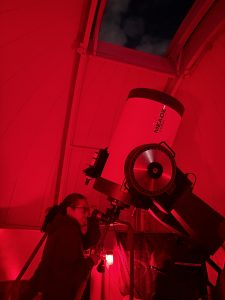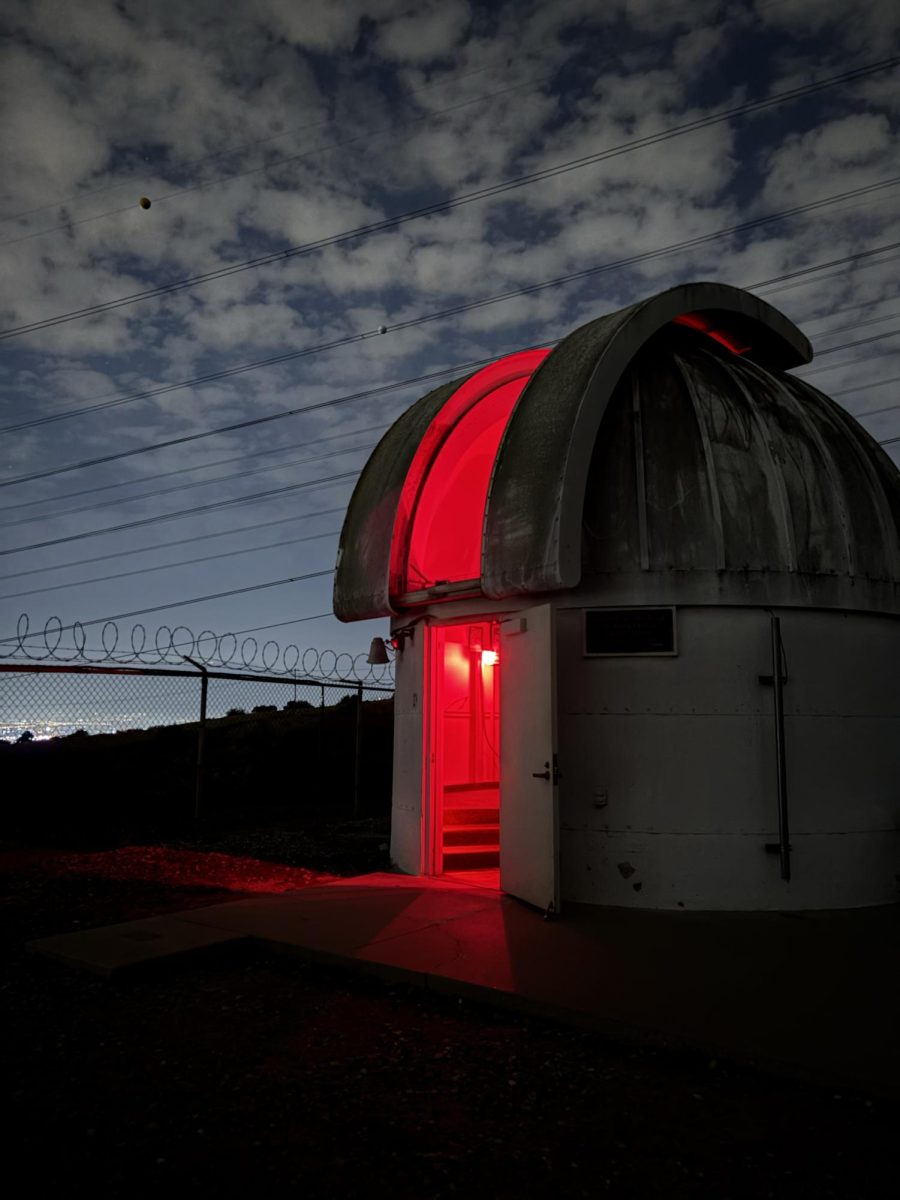Rio Hondo College offers many fun activities and events, including the Gordon D. Crowell Observatory night. Roadrunners and all other guests were welcomed to enjoy an expense-free night on campus on Feb. 28. With one of the largest telescopes open to the public, a Meade 16-inch Schmid-Cassegrain telescope, participants were able to view planets and stars with perfect visibility.
A few minutes prior to the event, participants were asked to wait by the Child Development Center so the hike could be done as a group for safety reasons. The man leading the group was the director of the Rio Hondo Observatory, Christopher Toby.“I used to work at the Griffith Observatory, but Rio’s telescope is slightly bigger and it’s free. I might be biased, but that seems better to me,” Toby told visitors.
Because of cloudiness, Toby cautioned the crowd that not all planets might be visible. As a group, it was decided that it was worth a try, and with that the hike began.After an uphill half-mile hike, the observatory was in sight. The small, dome-shaped building glowed red. The lighting choice wasn’t just for aesthetics—it allowed eyes to adjust to the darkness and made viewing through the telescope easier.
The first planet viewed was Venus. With a rotating roof and telescope, the ability to look anywhere in the sky was endless. Visitors “oohed” and “ahhed” when given the opportunity to glimpse through the lens.
Throughout the experience, Toby shared interesting facts about everything in sight. “We will never see a full Venus. For that to happen, it would have to be on the other side of the sun,” Toby explained.

After everyone got their chance to see Venus, the clouds had begun to clear over Jupiter. With a quick change of direction of the telescope, there it was. Luckily, three out of four moons surrounding Jupiter were visible—a sight Toby said visitors were lucky to see.
“Last week, we were able to see all four, but this is still fantastic!” he said.
Stories about different star constellations, such as Orion’s Belt and The Bullseye, were shared. Nebulas, the origin point where stars are born, were also visible. Though the sky remained cloudy, the stars were still an outstanding view.
The last planet seen was Mars, which the clouds had cleared away from just in time. Peering through the lens, two small captured moons were visible on either side of the planet.After everyone had their turn, the group hiked down the hill together, talking about the wonders they had just viewed.
Mary Lopez, a first-timer at the event, shared her excitement stating,“I would definitely come back to an event like this. I’ve never seen planets so close up before.”
The observatory is the perfect place for families and friends to come together and share an experience like no other. Seeing planets like Jupiter, Mars, and Venus with such detail is an experience most are unlikely to forget.
This won’t be the last opportunity to attend an event like this. Additional dates to experience the telescope include March 7 and 12 from 7 p.m. to 9 p.m., as well as April 4, 18, and 25, and May 2 and 16 from 8 p.m. to 10 p.m.
Be sure to check out this hidden gem at RHC and enjoy the wonders the solar system has to offer.


